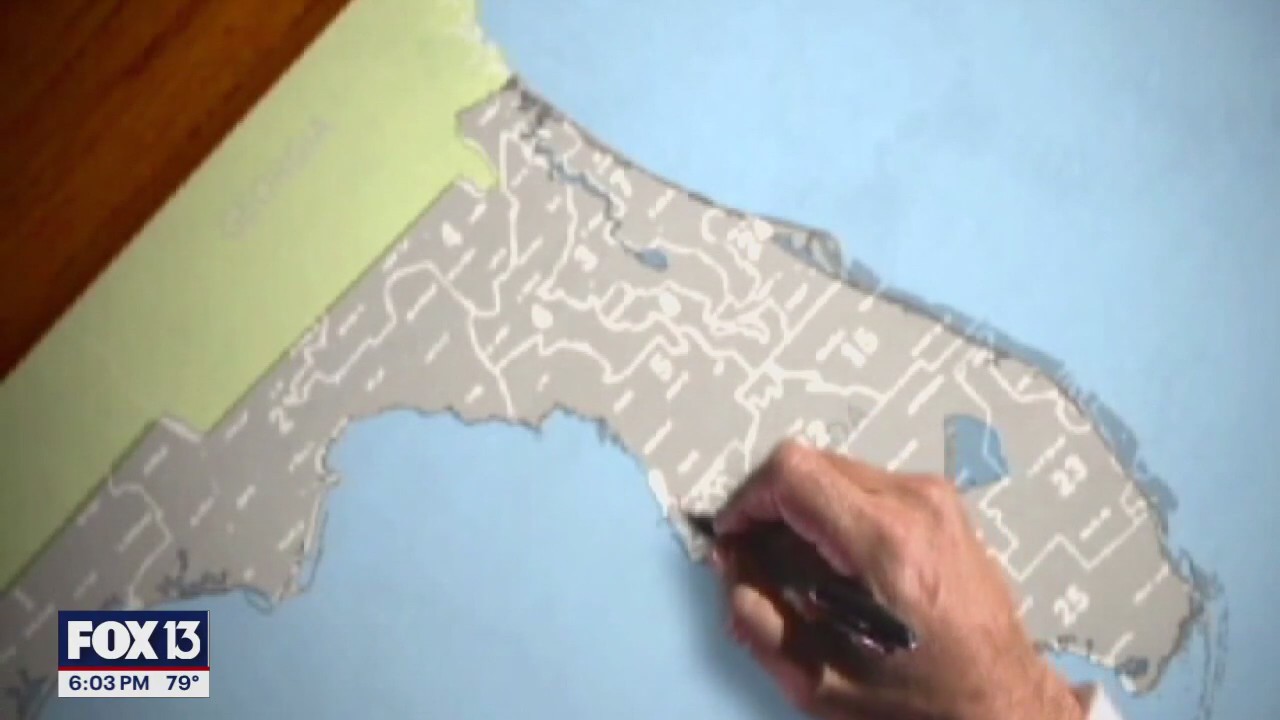[ad_1]

FLORIDA – Texas has passed a new congressional map that adds five Republican-leaning districts, aligning with former President Trump’s call for more GOP seats.
California’s Governor, Gavin Newsom, announced plans to counter this by creating five new Democratic districts in California.
Governor DeSantis has suggested Florida’s map may need adjustments due to population growth (again, the state constitution bans partisan gerrymandering).
What we don’t know:
It is uncertain whether Florida lawmakers will push the boundaries of the state’s redistricting amendment when the legislature reconvenes, how aggressively courts will enforce Florida’s ban on partisan map-drawing if challenged, or whether Congress or the president could call for a mid-decade census.
Timeline:
- Early 1800s: “Gerrymandering” coined after Massachusetts Gov. Elbridge Gerry drew distorted districts to help his party.
- 2019: U.S. Supreme Court rules partisan gerrymandering is outside federal court jurisdiction, setting the legal justification Texas will later use to redraw maps for the specific purpose of benefitting the Republican party.
- 2025: Texas Republicans approve a map favoring the GOP. California Democrats retaliate by pursuing their own map changes (pending results of an upcoming election)
- 2025: Florida Republicans consider new changes, setting the stage for another fight.
As parties polarized, red states tilted more Republican, and blue states tilted more Democratic—opening the door to more aggressive map-drawing.
- President Donald Trump: “I got the highest vote in the history of Texas… and we are entitled to five more seats.”
- Gov. Gavin Newsom (D-CA): “The idea the president is entitled to five seats should sicken everyone.”
- State Rep. Anna Eskamani (D-FL): “This is purely about a power grab by the Republican Party.”
- State Rep. Todd Hunter (R-TX): “The Supreme Court says we can use politics and partisanship to do congressional redistricting.”
- Gov. Ron DeSantis (R-FL): Argues changes are needed to reflect population growth and “raw deals” in census counts. “I think the state is malapportioned, so I do think it would be appropriate to do a redistricting here.”
- Terri Ann Lowenthal, Census Consultant: “This country has never taken a mid-decade census… The law is very clear, it cannot be used to reapportion Congress or to redraw congressional district lines.”
READ: FDOT denies St. Pete’s request to keep several street murals on roadways
Why you should care:
Congressional maps will help decide which party controls the U.S. House in 2026 and beyond.
Florida’s map could determine the balance of power in Washington, especially in tight midterm elections.
Minority representation may be at risk if Florida redraws districts meant to amplify diverse communities.
By the numbers
- 5 seats: Texas Republicans added to benefit the GOP.
- 5 seats: California Democrats now seek to add to counterbalance Texas.
- 1 seat: Florida gained in the last census, though DeSantis argues it should have been at least two.
- 5 years: Until the next national census, unless Congress authorizes one sooner (an unlikely scenario).
Big picture view:
The clash over redistricting underscores the deep partisan divide in American politics. What began as a tactical move in Texas has triggered responses in California and possibly Florida, setting the stage for a nationwide battle over the shape of political power itself.
CLICK HERE:>>> Follow FOX 13 on YouTube
The Source: Information for this story was gathered by FOX 13’s Craig Patrick.
[ad_2]
Source link
#Florida #eyes #redistricting #national #political #arms #race